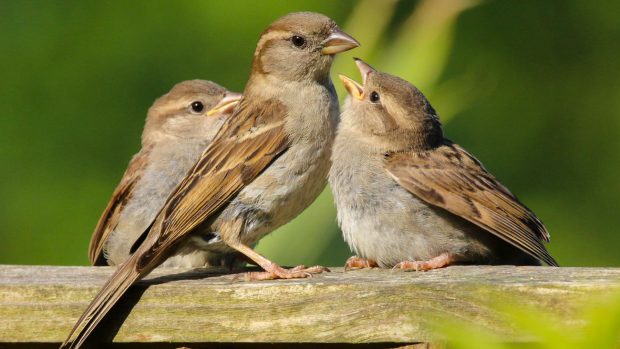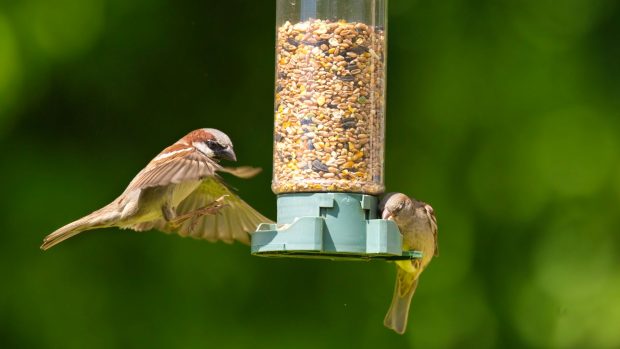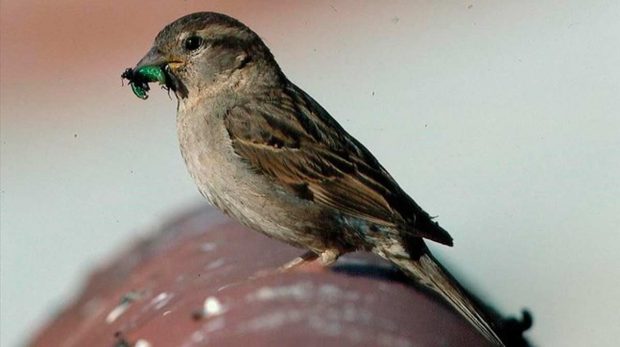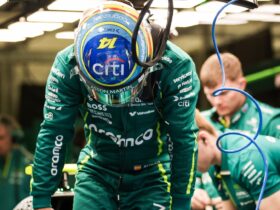Just celebrated World Gorrión Day, SEO/BirdLife has warned about the worrying decline of sparrows in Spanish cities and the urgent need to guarantee biodiversity in urban environments.
According to the data obtained in the last Atlas of Seo/BirdLife reproductive birds, It is estimated that in Spain there could be about 30 million copies of common sparrowbut in the last 25 years its population has decreased by 20%, which represents the loss of between 6 and 7 million copies.
Asunción Ruiz, executive director of SEO/BirdLife states that «the disappearance of the sparrow It is not just bad news for biodiversity, it is also an alarm signal for our quality of life ».


Understanding in cities and birds
«We need a well -understood nature in cities and birds, such as sparrows, they are excellent indicators of If cities have clean air, quality water and a healthy environment. It is time to recover spaces for life, ensuring that National Restoration Plan And urban policies include biodiversity as an essential pillar, ”adds Ruiz.
Despite this decline, the analyzes carried out by SEO/BirdLife through the data collected in the SACRE program (monitoring of common breeding birds) indicate that LGorrion population shows a stable trend in the last decade.
Although this is an encouraging news, SEO/BirdLife urges not to lower your guard and keep implementing conservation measures to guarantee the recovery of their populations that existed in years prior to the decline described and guarantee their survival in urban and rural environments.
Cities without sparrows, an urban model that fails
The decline of common sparrow in recent decades reflects an environmental crisis in urban environments. Contamination, lack of green spaces and the transformation of urban landscape have turned cities into increasingly hostile places for biodiversity.
Among the main threats faced by the sparrows stand out:
- Loss of nesting places: The rehabilitation of buildings and the new constructions do not leave holes in roofs and facades, which prevents the sparks with.
- Air pollution: Poor air quality in cities affects your health and reduces your life expectancy.
- Loss of green areas: The elimination of spaces with vegetation and the increase in pavement reduce the availability of food and essential insects for their survival.
- Climate change: Heat waves and reduction of water sources affect their populations.
- Predation for loose domestic cats: The presence of not controlled cats in cities is a pressure factor on sparrow populations.


Transformation of the urban model
SEO/BirdLife claims a transformation of the urban model to guarantee the conservation of biodiversity. A well -planned city should not only be habitable for people, but also for nature.
Some of the necessary measures, as collected by the NGO document Manual 100 Measures for the conservation of biodiversity in urban environmentsthey are the Presence of more green areas and ecological corridors urban to favor connectivity between natural spaces.
Biodiversity friendly buildings
They also emphasize that the Promote green infrastructuresuch as landscaped roofs and vegetable facades, which provide refuge and food to urban birds.
For example, they explain that the «Design biodiversity friendly buildings, incorporating measures such as the installation of nest boxes and the maintenance of holes in rehabilitations ».
Another solution consists of Reduction of pesticides use in parks and gardens to protect the insects on which the sparrows depend; and encourage sustainable mobility to reduce air pollution.
Restoration and rehabilitation of buildings
An outstanding measure for SEO/BirdLife that would solve many problems for urban birds is the Rehabilitation of buildings. To do this, the NGO makes available to citizens two tools to help agents in the field of building to integrate into their projects the conservation of wild species that builds use as a place of refuge or nesting.
Specifically, these two tools in digital format are aimed at architects, riggers, technicians of public administrations, promoters, construction companies, owners and, in general, to any agent in the field of building. Their objective is to help them integrate the conservation of wild species that use buildings as a place of refuge or nesting.
On the one hand, there is the technical guide Wildlife and buildings: Technical guide to conserve and foster biodiversity in new construction and buildingaims Inform professionals involved in building processes on the relationship of buildings with biodiversity and the importance of integrating their conservation.


Biodiversity and buildings
In addition, the guide is housed and complemented by the website Biodiversity and buildingsa practical instrument so that any agent in the field of building finds information on how to protect and promote wild species in their project.
The web offers a catalog of the main species of birds and bats that build the buildings, with the fundamental information about their use of buildings and main requirements. In addition, he has a potential species search engine depending on the situation and characteristics of the building.
National Restoration Plan
The loss of biodiversity in cities is not only an environmental issuebut also compromises people’s quality of life. In this context, Spain must guarantee the integration of urban biodiversity in its National Restoration Plan, in compliance with the international commitments acquired in the global biodiversity framework of Kunming-Montreal and in the European Regulation of Restoration of Nature.
These agreements They establish that by 2030 all cities and municipalities of more than 20,000 inhabitants must increase the total area of urban green spaces and improve your quality; restore at least 10% of the urban surface with nature -based solutions; and reduce the negative impacts of urbanization on biodiversity.
SEO/BirdLife considers that Spain must reflect these objectives in its national planningensuring that cities are an active part of the solution to the biodiversity crisis.





